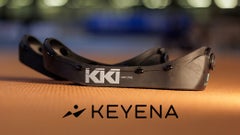Nike Structure 26
The Nike Structure 26 is a versatile daily trainer that provides stability and cushioning for everyday runs, walking, and casual wear.
Best UseBest Use Learn More
SurfaceSurface Learn More
StabilityStability Learn More
CushioningCushioning Learn More
All Men's Road Shoes
-
Daily TrainersDaily Trainers
The baseline definition of a running shoe. Daily Trainers lean on time-proven designs, technologies and features for dependable cushioning, support and comfort. They're a staple in every runner's closet, and if you are new to running shoes, then you should start your journey here.
-
Performance TrainersPerformance Trainers
Performance Trainers provide a springy feel and make longer runs easier and faster runs faster. While quicker than Daily Trainers, Performance Trainers are not nearly as fast as Super Shoes. Due to a focus on keeping things light weight, Performance Trainers are less durable than Daily Trainers. These can also be a good option for one's first race shoe.
-
Men's Super ShoesMen's Super Shoes
Super Shoes are the fastest running shoes you can buy. They are designed to race your absolute best and represent the pinnacle of running shoe technology and innovation. They have the highest energy return foams and plates for new levels of performance. Low durability, but maximum speed is the name of the game here.
Men's Running Shoes by Surface
-
Roads & PavementRoads & Pavement
Road running shoes feature smooth outsoles that are designed for running on paved surfaces such as roads, sidewalks, and bike paths.
-
Smooth Trails & FireroadsSmooth Trails & Fireroads
Designed to handle most trail runs, these shoes prioritize comfort and a smooth ride. These shoes are great for anything from smooth singletrack, park trails, and fireroads making them ideal for those who run from their doorstep on streets before hitting the trail.
-
Rocky & Technical TrailsRocky & Technical Trails
These shoes are best used for hard, rugged trails such as shale, granite or sandstone where grip on smooth surfaces and underfoot protection are important.
-
Soft & Muddy TrailsSoft & Muddy Trails
Designed for use in muddy, soggy conditions, these shoes feature very aggressive outsoles that dig deep into soft ground for exceptional traction.
-
Snowy & Icy TrailsSnowy & Icy Trails
These shoes feature technical outsoles designed to grip snowy and icy trails making them ideal for winter trail running.
Cushioning Level
Cushioning level, or stack height, refers to how much shoe is between your foot and the ground. For this category, we reference the amount of cushioning below the forefoot as the heel height will be equal to or greater than the forefoot height.
Learn more about stack heights and how we measure them.-
Barefoot
0-13mm. The Shoe generally does not have a midsole and feels like there is no cushioning. This shoe is all about feeling the ground underfoot.
-
Minimal
14-18mm. The shoe has a thin midsole that allows for a natural running experience. Racing shoes and minimalist shoes are common here. These shoes offer a feeling of being connected to the road or trail.
-
Low
19-23mm. The shoe has a slightly cushioned feel and may feature added cushioning technologies. Performance training shoes and some trail shoes are common here. These offer protection during footstrike but prioritize a lightweight, grounded experience.
-
Medium
24-28mm. These shoes have a stack height that fall near the middle of the spectrum.The shoes in this category are verstaile and great for all types of runs and distances.
-
High
29-34mm. The shoe has a thick midsole and ample cushioning. These shoes are highly protective and absorb more impact than the body.
-
Maximal
35mm plus. The shoe has an extremely thick midsole and extra cushioning. The focus is on protection and soft foam underfoot with hardly any ground feel.
Stability Level
-
Neutral Running Shoes
Neutral shoes support the foot through a normal range of arch collapse and generally do not have a built-in technology to correct movement.
-
Stable
Stability shoes are a great option for those who overpronate or need added support. These shoes help to limit the inward rolling motion of the ankle while running or walking and assist in guiding the foot straight through the gait cycle.
Product Details:
The Nike Structure 26 is a comfortable and reliable choice for a stability shoe with a balanced ride. Starting with the upper, engineered mesh gives a breathable and supportive fit. The improved collar and tongue add plush, fitted comfort.
The midfoot support system surrounds the arch of the foot for a stable platform, and an internal midfoot support band brings additional security. A full-length ReactX midsole delivers responsive cushioning with a smooth transition.
Updated from the previous version, the outsole features larger segments of rubber, giving the shoe a wider base with innate stability. If you're looking for a supportive daily trainer, the Nike Structure 26 delivers the security you need with the comfort to carry you through your weekly miles.
What You'll Love:
- Stability to reduce overpronation
- Bouncy, supportive cushioning
- Soft, breathable upper
Model Number: HJ1102-401
Specs & FitLearn More
Shoe Specs
| Weight: | 10.4 oz 295 g |
| Heel Stack: | 38 mm |
| Forefoot Stack: | 28 mm |
| Heel-Toe Offset: | 10 mm |
How It FitsLearn More
| Heel Width: | Average |
| Midfoot Fit: | Snug |
| Toe Box Fit: | Average |
How We Measure Our Shoe Specs
-
We measure every shoe in-house to provide accurate and consistent details.
-
Weight
The weight is based on a Men's size 9 for Men's and Unisex shoes or Women's size 8 for Women's shoes. The weight listed is for a single shoe, including the laces.
-
Heel Stack
The heel stack refers to how high your heel sits above the ground when wearing shoes. Based on Men's size 9 as the standard.
-
Forefoot Stack
Forefoot stack refers to how high the ball of the foot sits above the ground when wearing shoes. Based on Men's size 9 as the standard.
-
Heel-toe Offset
Heel-toe offset (drop) is the difference in height between the heel stack and the forefoot stack. We use the number given to us by the brand.
How We Measure Shoe Fit
-
All measurements are based on Medium width.
-
Fit (width) options are Narrow - Snug - Average - Roomy - Wide.
-
Sizing (length) options are Short - True - Long. Note: fit is relative to the "average" running shoe.
-
We partner with SmartLast, a program by Heeluxe, to use advanced shoe-measuring technology, to provide objective measurements for toe box, midfoot, and heel widths as well as overall length.
Cushioning Level
-
BarefootBarefoot
0-13mm. The Shoe generally does not have a midsole and feels like there is no cushioning. This shoe is all about feeling the ground underfoot.
-
MinimalMinimal
14-18mm. The shoe has a thin midsole that allows for a natural running experience. Racing shoes and minimalist shoes are common here. These shoes offer a feeling of being connected to the road or trail.
-
LowLow
19-23mm. The shoe has a slightly cushioned feel and may feature added cushioning technologies. Performance training shoes and some trail shoes are common here. These offer protection during footstrike but prioritize a lightweight, grounded experience.
-
MediumMedium
24-28mm. These shoes have a stack height that fall near the middle of the spectrum.The shoes in this category are verstaile and great for all types of runs and distances.
-
HighHigh
29-34mm. The shoe has a thick midsole and ample cushioning. These shoes are highly protective and absorb more impact than the body.
-
MaximalMaximal
35mm plus. The shoe has an extremely thick midsole and extra cushioning. The focus is on protection and soft foam underfoot with hardly any ground feel.
Technologies
MIDSOLE
- ReactX foam provides stable yet responsive cushioning with a smooth heel-to-toe transition.
OUTSOLE
- Blown rubber in the forefoot decreases impact.
- High abrasion rubber in the heel increases durability.
UPPER
- Engineered mesh delivers breathability with a comfortable, supportive fit.




